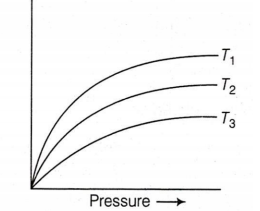 Multiple Choice Questions
Multiple Choice QuestionsOn the basis of Langmuir adsorption isotherm the amount of gas adsorbed at very high pressure.
Reaches a constant limiting value
Goes on increasing with pressure
Goes on decreasing with pressure
First increasing and then decreasing with pressure
If x is amount of adsorbate and m is amount of adsorbent, which of the following relations is not related to adsorption process?
In the presence of a catalyst, the heat evolved or absorbed during the reaction
increases
decreases
remains unchanged
may increase or decrease
Gold number is associated with
amount of gold
protective colloids
purple of cassius
electrophoresis
Which one of the following forms micelles in aqueous solution above certain concentration?
Urea
Dodecyl trimethyl ammonium chloride
Pyridinium chloride
Glucose
Migration of colloidal particles towards the oppositely charged electrode is called:
Electrosmosis
Electrophoresis
Coagulation
Electrodispersion
The variation of adsorption of N, on charcoal with pressure at different constant temperature can be represented by :

The correct increasing order of temperature
T1 , T2 and T3 is :
T1 < T2 < T3
T2 < T3 < T1
T3 < T2 < T1
T2 < T1 < T3
